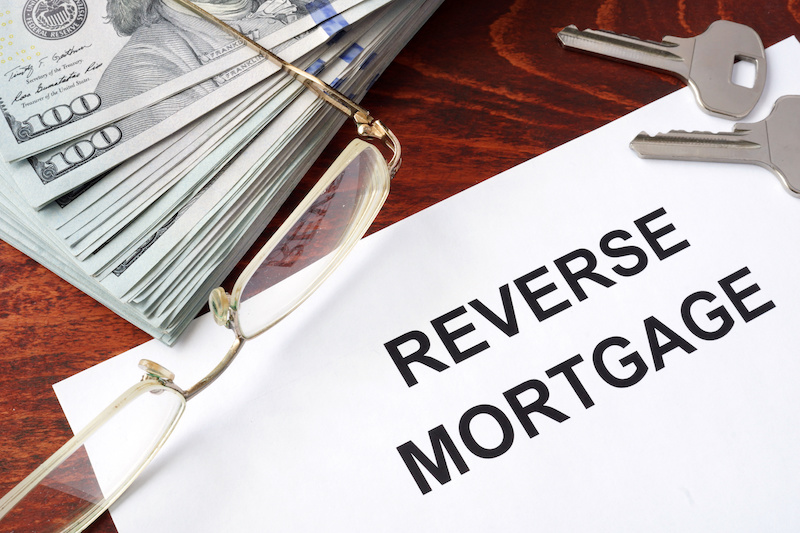A reverse mortgage starts with a homeowner who owes little or nothing to a typical mortgage lender. Thus, they own all or nearly all of the available home equity. It is this equity that forms the backbone of a reverse mortgage. Aside from equity ownership, reverse mortgages are geared towards senior citizens, with a minimum age requirement of 62. A loan officer should be consulted for details of how much outstanding mortgage a borrower may have while still being eligible for a RM.
Since a reverse mortgage specifies home equity as collateral for prospective lenders, these financial instruments are limited to those with substantial home equity. If the borrower decides to move and sell the house used as collateral for a reverse mortgage, they will receive substantially less from the sale proceeds. A reverse mortgage, in effect, give the proceeds of a home sale before the home is actually sold.

Why You Need a Reverse Mortgage
A reverse mortgage can be an excellent source of cash for living expenses, including critical insurance in other aspects of life, or as funds for investing/speculation in hopes of further gains. There is generally little to no restriction regarding use of funds obtained from a reverse mortgage. Another very important point to consider: reverse mortgage loan proceeds are not taxable income. Therefore, the RM cash flow does not set off taxes that would apply if it was replaced by other, taxable income. Remember that above a certain taxable-income level, social security benefits are taxable. Reverse mortgage is a great way to obtain cash flow without triggering higher income tax brackets.
Risk
Lenders should be clear that, as mentioned before, a reverse mortgage eats into a borrower’s claim to home equity. For this reason, a reverse mortgage will never be more than the amount of home equity a borrower owns. A loan officer should work to clarify any concerns of being “over one’s head” with reverse mortgages since this is an understandable fear that many homeowners are cognizant of. Other caveats to reverse mortgages include the requirement to keep up with property taxes, maintenance/repair work on the house, homeowner insurance and, if applicable, association fees. If any of these obligations fall from good standing, the reverse mortgage lender can take action to recover their funds at the expense of the borrower. As with any collateral-based loan, damage or threat to the collateral is frowned upon by the lender.
How to Know if You Qualify for a Reverse Mortgage
Examine the following hypothetical situation for a qualifying homeowner:
- Initial Home Value: 200,000
- Reverse Mortgage Amount Available: 100,000
- Closing and Other Necessary RM Costs: 9,000
- Remaining Amount On “Normal” Mortgage: 5,000
- Time Frame: 10 years.
In this example, the net dollar amount available to the borrower would be 100,000 – 9,000 – 5,000 = 86,000. Assume that home value grows slowly every year and that an annual interest rate of 5 percent acts on the RM amount available. After 10 years, the 100,000 originally borrowed prior to closing and normal-mortgage deductions, would grow to 162,889. This is the amount due, and can be settled by selling the home which, let’s assume, has grown in value by about 1 percent a year and so is now worth 221,000. For the sake of simplicity, assume only 6 percent selling costs. This translates to selling cost of 13,260.
Sale proceeds would be as follows:
- Initial sale proceeds: 221,000
- 6 percent selling costs: 13,260
- Reverse mortgage repayment due: 162,889
Remaining sale proceeds: 221,000 – 13,260 – 162,889 = 44,851. Including the 86,000 obtained from the reverse mortgage, the borrower has net cash of 130,851. Of course, there are some assumptions and simplifications here, but notice how nearly two thirds of the 130,851 were available to the borrower in the form of a reverse mortgage over 10 years. This is the appeal of reverse mortgages. They enable a borrower to pay immediate expenses far more easily than with the wait and uncertainty that comes with real estate sales. Refinancing and other financial moves related to housing would further complicate the calculation and require the experience of a professional.
Reverse mortgages are a tax-free source of cash for older homeowners who have, or are close to, paying off their mortgage loan. The amount gained from a reverse mortgage and the amount due depend on specific mortgage terms, interest rate, selling price of the house, the borrower’s age, refinancing, and sum of all origination and closing costs typically associated with reverse mortgages and home sales. The best reverse mortgage deals are difficult to generalize but, given the complexity of these financial instruments, borrowers should find a lender who emphasizes transparency and simplicity in the loan agreement and overall cost to the borrower.